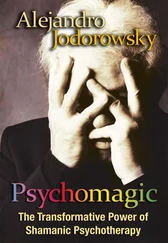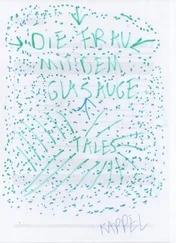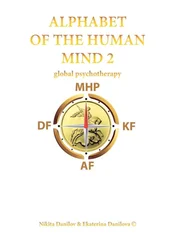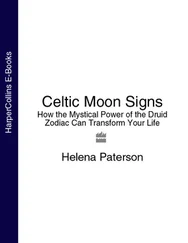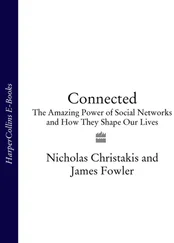Jodorowsky, Alejandro - Psychomagic - The Transformative Power of Shamanic Psychotherapy
Здесь есть возможность читать онлайн «Jodorowsky, Alejandro - Psychomagic - The Transformative Power of Shamanic Psychotherapy» весь текст электронной книги совершенно бесплатно (целиком полную версию без сокращений). В некоторых случаях можно слушать аудио, скачать через торрент в формате fb2 и присутствует краткое содержание. Год выпуска: 2010, Издательство: Inner Traditions Bear & Company, Жанр: Старинная литература, на английском языке. Описание произведения, (предисловие) а так же отзывы посетителей доступны на портале библиотеки ЛибКат.
- Название:Psychomagic: The Transformative Power of Shamanic Psychotherapy
- Автор:
- Издательство:Inner Traditions Bear & Company
- Жанр:
- Год:2010
- ISBN:нет данных
- Рейтинг книги:4 / 5. Голосов: 1
-
Избранное:Добавить в избранное
- Отзывы:
-
Ваша оценка:
- 80
- 1
- 2
- 3
- 4
- 5
Psychomagic: The Transformative Power of Shamanic Psychotherapy: краткое содержание, описание и аннотация
Предлагаем к чтению аннотацию, описание, краткое содержание или предисловие (зависит от того, что написал сам автор книги «Psychomagic: The Transformative Power of Shamanic Psychotherapy»). Если вы не нашли необходимую информацию о книге — напишите в комментариях, мы постараемся отыскать её.
Psychomagic: The Transformative Power of Shamanic Psychotherapy — читать онлайн бесплатно полную книгу (весь текст) целиком
Ниже представлен текст книги, разбитый по страницам. Система сохранения места последней прочитанной страницы, позволяет с удобством читать онлайн бесплатно книгу «Psychomagic: The Transformative Power of Shamanic Psychotherapy», без необходимости каждый раз заново искать на чём Вы остановились. Поставьте закладку, и сможете в любой момент перейти на страницу, на которой закончили чтение.
Интервал:
Закладка:

Psychomagic

“Jodorowsky is a brilliant, wise, gentle, and cunning wizard with tremendous depth of imagination and crystalline insight into the human condition. His work is a source of inspiration for me and for many of the most important and innovative artists of our time. Psychomagic is necessary reading for all who long to shock the world into awakening and remembrance of what has always been and what is still to come.”
DANIEL PINCHBECK, AUTHOR OF 2012: THE RETURN OF QUETZALCOATL
“Currently there are books that have become essential to winnow out established ideas and open new horizons. The texts brought together here have that special ability to contemplate old problems from perspectives that were not thought to exist.”
EL MUNDO
“Alejandro Jodorowsky seamlessly and effortlessly weaves together the worlds of art, the confined social structure, and things we can only touch with an open heart and mind.”
ERYKAH BADU, ARTIST/ALCHEMIST
“The best movie director ever!”
MARILYN MANSON
CONTENTS
Title Page
Epigraph
Prologue
PART ONE

PSYCHOMAGIC: SKETCHES OF A PANIC THERAPY
A Portrait of the Artist in Panic Character by Interviewer Gilles Farcet
ONE—The Poetic Act
TWO—The Theatrical Act
SACRAMENTAL MELODRAMA
THREE—The Oneiric Act
FOUR—The Magic Act
FIVE—The Psychomagic Act
SIX—Examples of Psychomagic Acts
SEVEN—Psychomagic Letters
EIGHT—From Imagination to Power
PART TWO

LESSONS FOR MUTANTS
A Synthesis of Experiences by Interviewer Javier Esteban
NINE—Keys to the Soul
TEN—The Trail of Life
ELEVEN—The Invisible Bridge
TWELVE—Visions
THIRTEEN—The Art of Healing
FOURTEEN—Understanding Life
PART THREE

AN ACCELERATED COURSE IN CREATIVITY
Introduction
HISTORY OF THE IMAGINARY
LEAVING OUR PRISONS
BE CREATIVE
FIFTEEN—Exercises for the Imagination
GROW
EXPAND
SHINE
BE WEIGHTLESS
THE GAME OF TIME AND SPACE
BLESS THE WORLD
DISSOLVE THE I
BE A DOT
FINE ARTS
HAVE TALENT
DRAW
SCULPT
FASHION DESIGN
THE RAINBOW
YOUR SPACE
FREE YOURSELF FROM LANGUAGE
SIXTEEN—Techniques for the Imagination
SEVENTEEN—Therapeutic Applications
Footnotes
About the Author
About Inner Traditions • Bear & Company
Copyright & Permissions
PROLOGUE
Having lived many years in Mexico City, I had the opportunity to study the methods of those called “witches” or “folk healers.” They are legion. Every neighborhood has one. Rising up in the heart of the city is the great Sonora market, which sells exclusively magic products: colored candles, dissected fish shaped like the devil, images of saints, medicinal plants, blessed soaps, tarots, charms, plaster sculptures of the Virgin of Guadalupe turned into skeletons, and so on. In some back rooms, plunged in semidarkness, women, each with a triangle painted on her forehead, rub bunches of herbs and holy water on those who come for consultations; they practice “cleansing” the body and the aura . . . Professional doctors, being faithful sons of the university, despise these practices. According to them, medicine is a science. They would like to find a precise, ideal remedy for every illness, with each treatment distinct from all others. They want medicine to be one official method, with no variations, to be applied to patients who are treated only as bodies. None of them proposes to cure the soul. To folk healers, on the other hand, medicine is an art.
It is easier for the unconscious to understand dream language than rational language. From a certain point of view, illnesses are dreams, messages that reveal unresolved problems. “Folk healers” develop personal techniques with great creativity: ceremonies, spells, strange medicines such as café au lait laxatives, rusty screw infusions, mashed potato sanitary napkins, animal excrement tablets, or moth eggs. Some have more imagination or talent than others, but all, if consulted with faith, are useful. They speak to the primitive and superstitious individual, whom we all carry inside.
Watching these popular therapists operate, often performing miracles using the honorable tricks of a skilled magician, I came up with the notion of the “sacred trap.” For the extraordinary to occur, it is necessary for the sick to firmly believe in the possibility of a cure and to accept the existence of miracles. To be successful, the healer is forced to employ tricks during the first meetings, which convince her clients that material reality obeys that of the spirit. Once the sacred trap tricks the person seeking consultation, he experiences an interior transformation that permits him to capture the world by way of the intuition rather than by reason. This is the only way that a true miracle can take place.
But I ask myself: without the sacred trap of this artistic therapy, could a person without faith be cured? On the other hand, although the rational mind guides each individual, can we say that anyone lacks faith? At every moment, the capacity of the unconscious exceeds the limits of our reason, whether by way of dreams or by involuntarily acts. With that in mind, shouldn’t there be a way to make the unconscious behave voluntarily, like an ally?
One incident that occurred in one of my psychogenealogy courses gave me an idea: When I described the causes of neurosis, a medical student suddenly fell on the floor twisting with painful spasms. It seemed like an epileptic seizure. Amid general panic, without anyone knowing how to help him, I went over to the afflicted student and—without knowing why and with a great deal of trouble—I removed his wedding band from the ring finger of his left hand. Immediately, he calmed down. I realized that the objects that surround and accompany us form part of the language of the unconscious. In this way, putting a ring on a person can imprison him, while taking the ring away can relieve him . . .
Another experience, which had very revealing results: When my son Adan was six months old, he was ill with a very bad case of bronchitis. A doctor friend of mine, an herbalist, prescribed drops of essential oils. My ex-wife Valérie, Adan’s mother, was to pour thirty drops into his mouth three times a day. She quickly complained that the boy was not getting better.
I told her, “The problem is you don’t believe in the remedy. What religion were you brought up in?”
“Like every Mexican—Catholic!”
“Then we are going to incorporate faith into these drops. Each time you administer them, say an Our Father.”
So that’s how Valérie did it, and Adan recovered quickly.
After that, I began—very prudently—to incorporate this method in my tarot readings. When a client asked me how to solve a problem, I would prescribe what I called “Psychomagic.” Why didn’t I just call it “magic”?
For a primitive therapy to function, the witch doctor, supported by the spiritual superstitions of the patient, must maintain a mystery, present himself as the possessor of superhuman powers obtained through a secret initiation and relying on divine and supernatural allies to bring about a cure. The remedies they provide are mysterious to their clients, and the actions they recommend are intended to be performed without knowing why. In Psychomagic, to the contrary, we need the individual’s understanding instead of his superstitious beliefs. The patient should know the reason for each of his actions. The psychomagician makes the transition from witch doctor to adviser. Using psychomagic prescriptions, the patient becomes his own healer.
Читать дальшеИнтервал:
Закладка:
Похожие книги на «Psychomagic: The Transformative Power of Shamanic Psychotherapy»
Представляем Вашему вниманию похожие книги на «Psychomagic: The Transformative Power of Shamanic Psychotherapy» списком для выбора. Мы отобрали схожую по названию и смыслу литературу в надежде предоставить читателям больше вариантов отыскать новые, интересные, ещё непрочитанные произведения.
Обсуждение, отзывы о книге «Psychomagic: The Transformative Power of Shamanic Psychotherapy» и просто собственные мнения читателей. Оставьте ваши комментарии, напишите, что Вы думаете о произведении, его смысле или главных героях. Укажите что конкретно понравилось, а что нет, и почему Вы так считаете.

